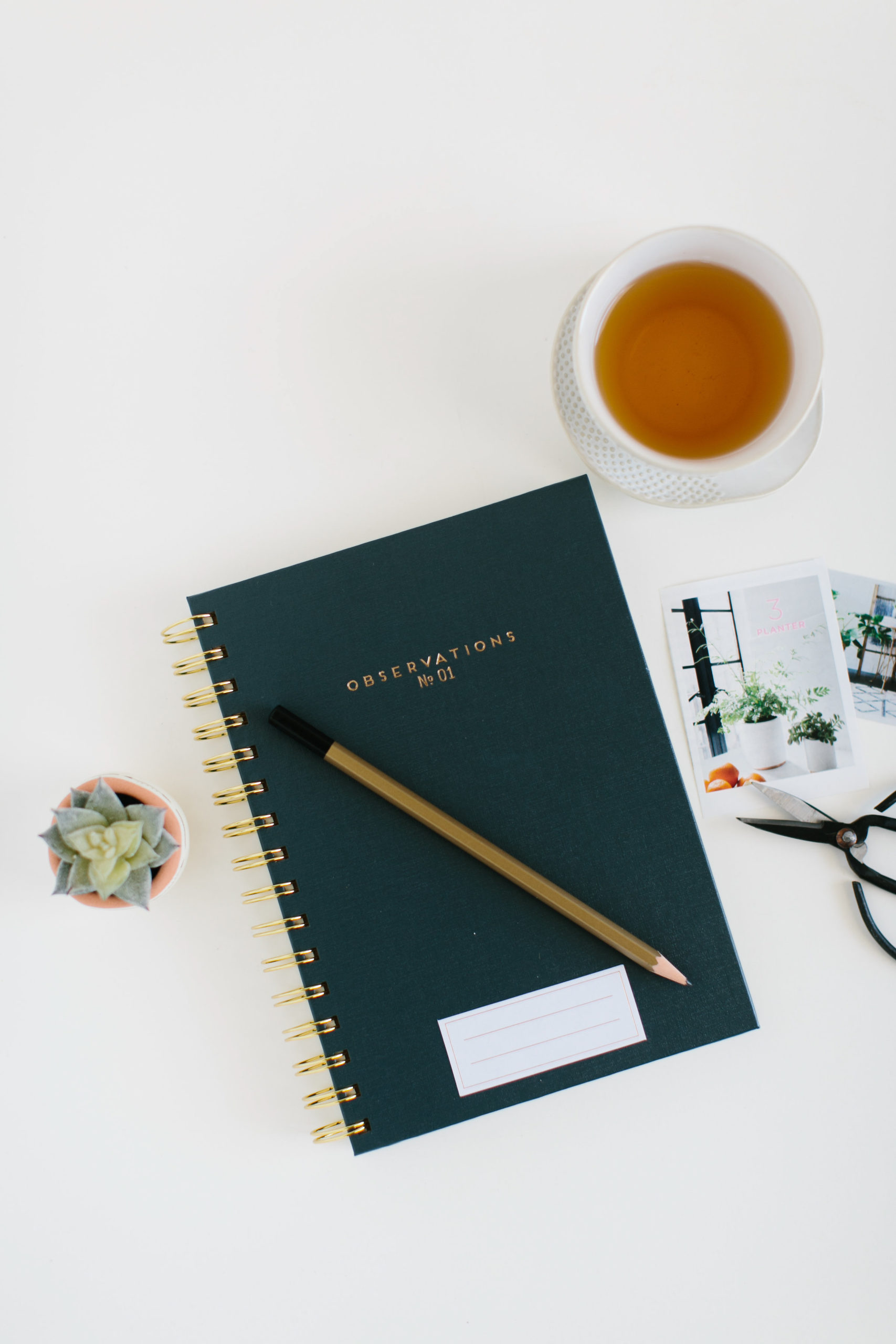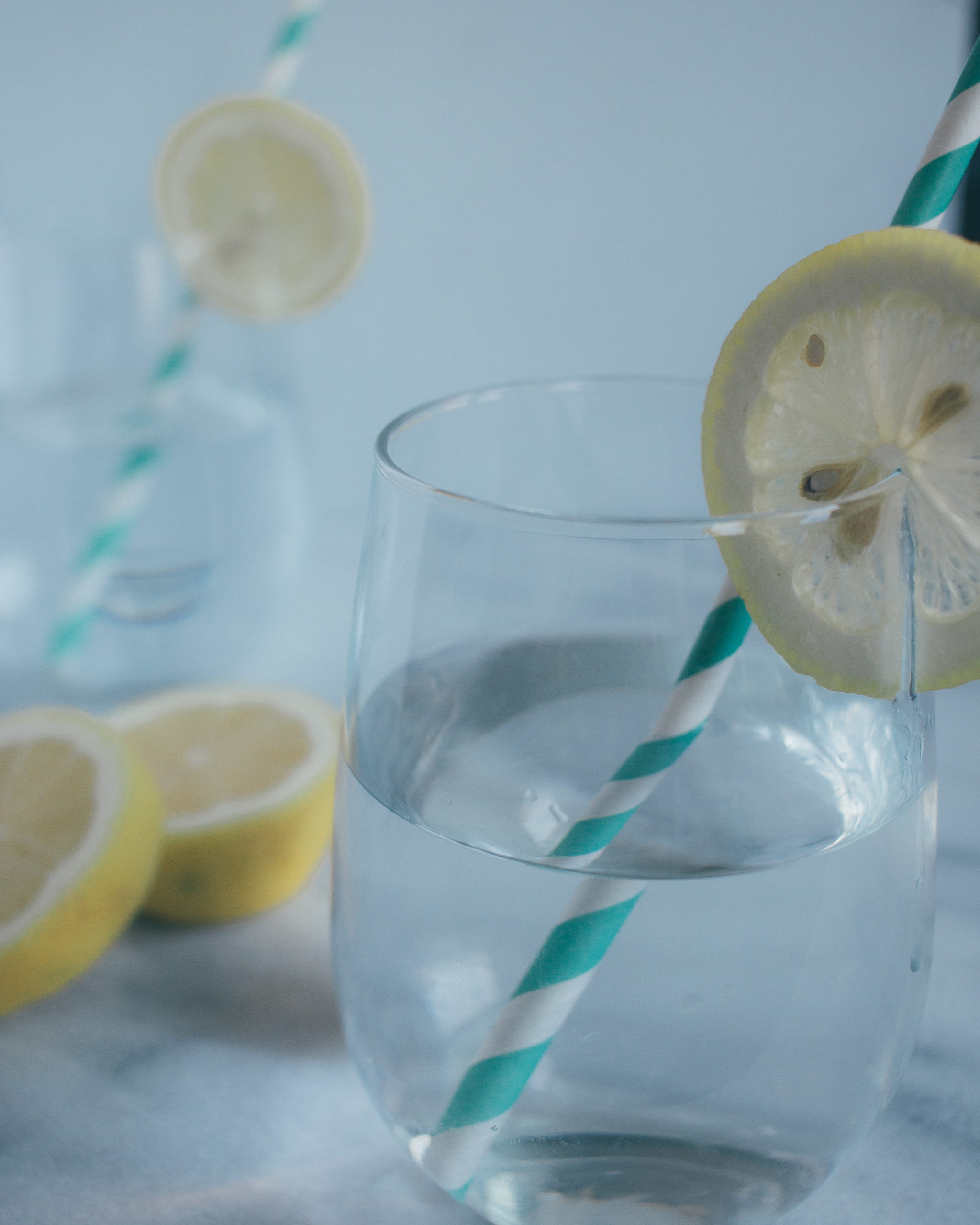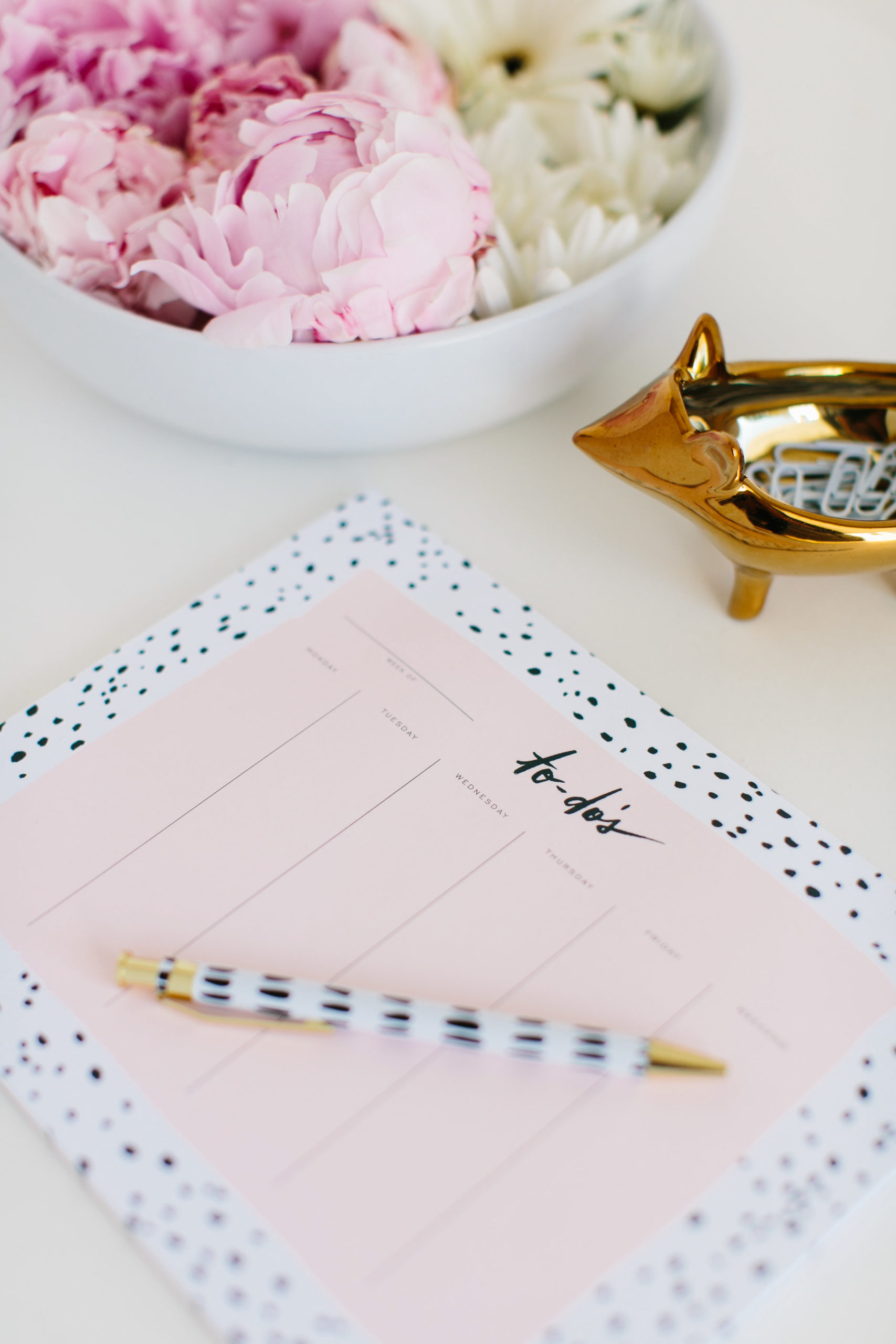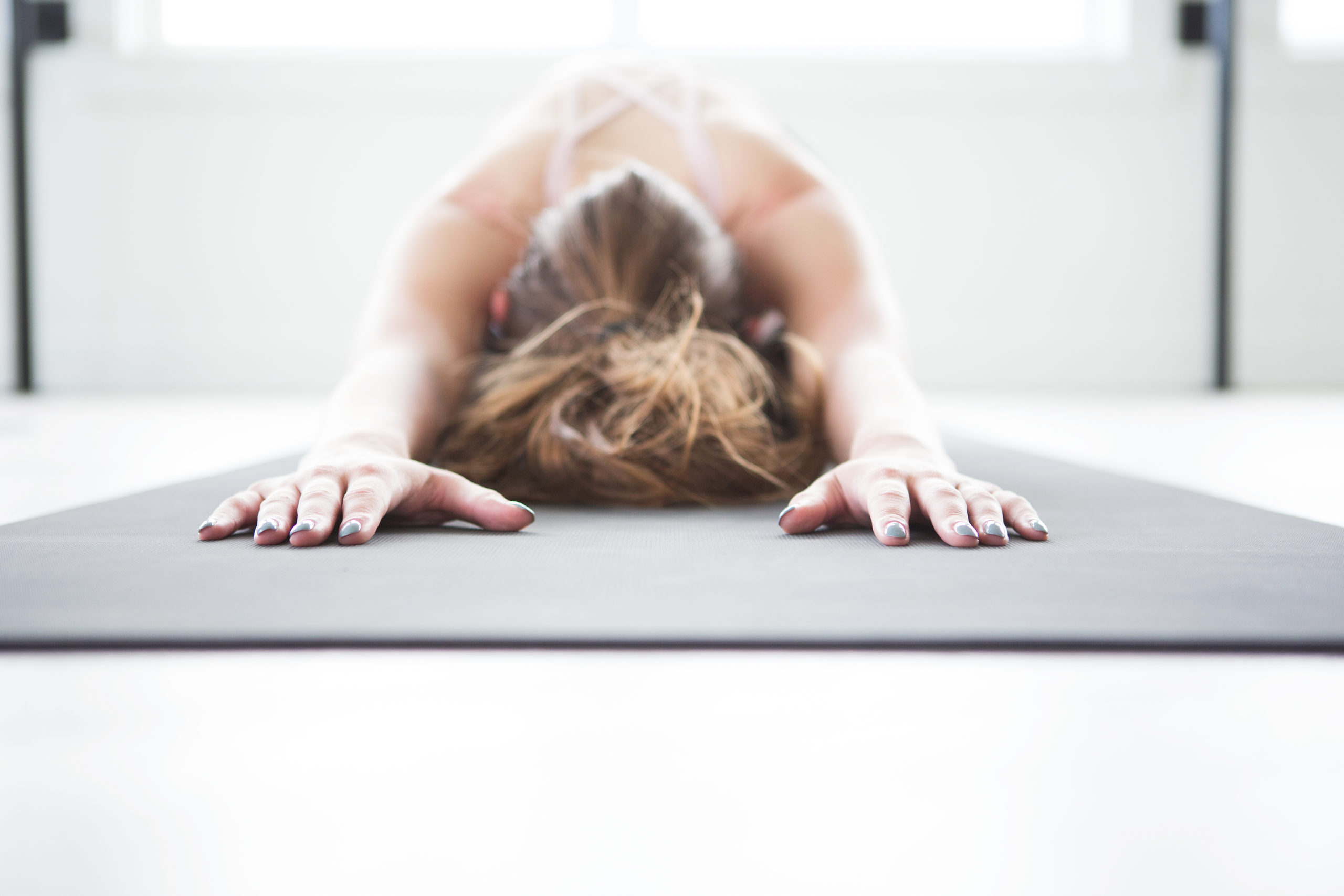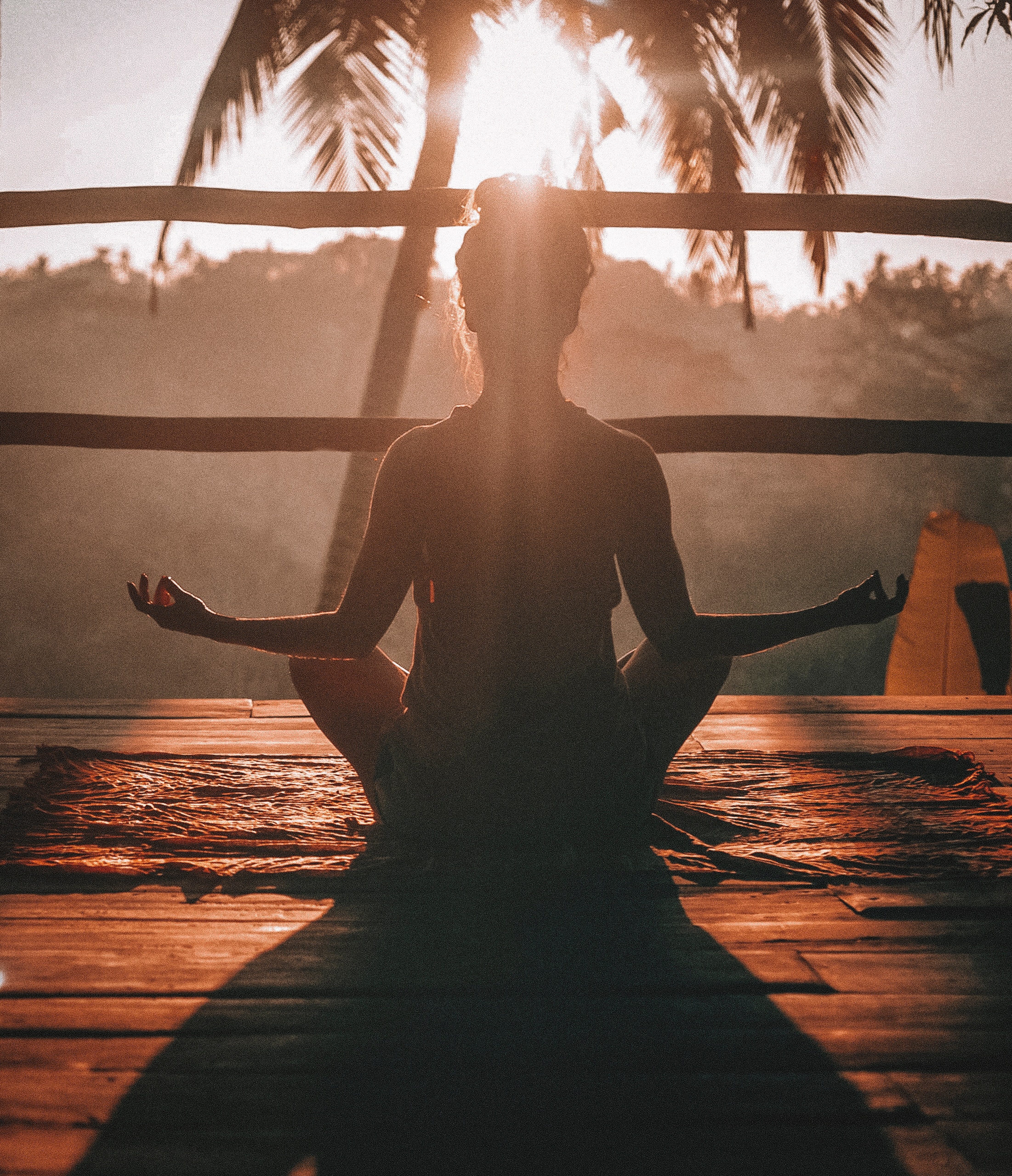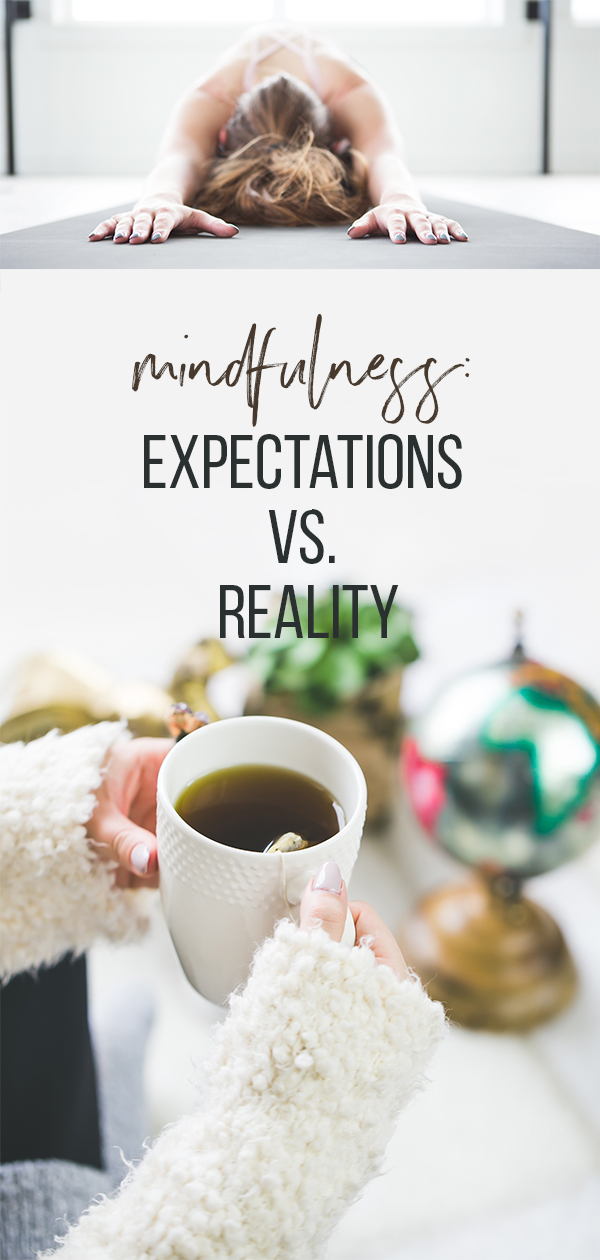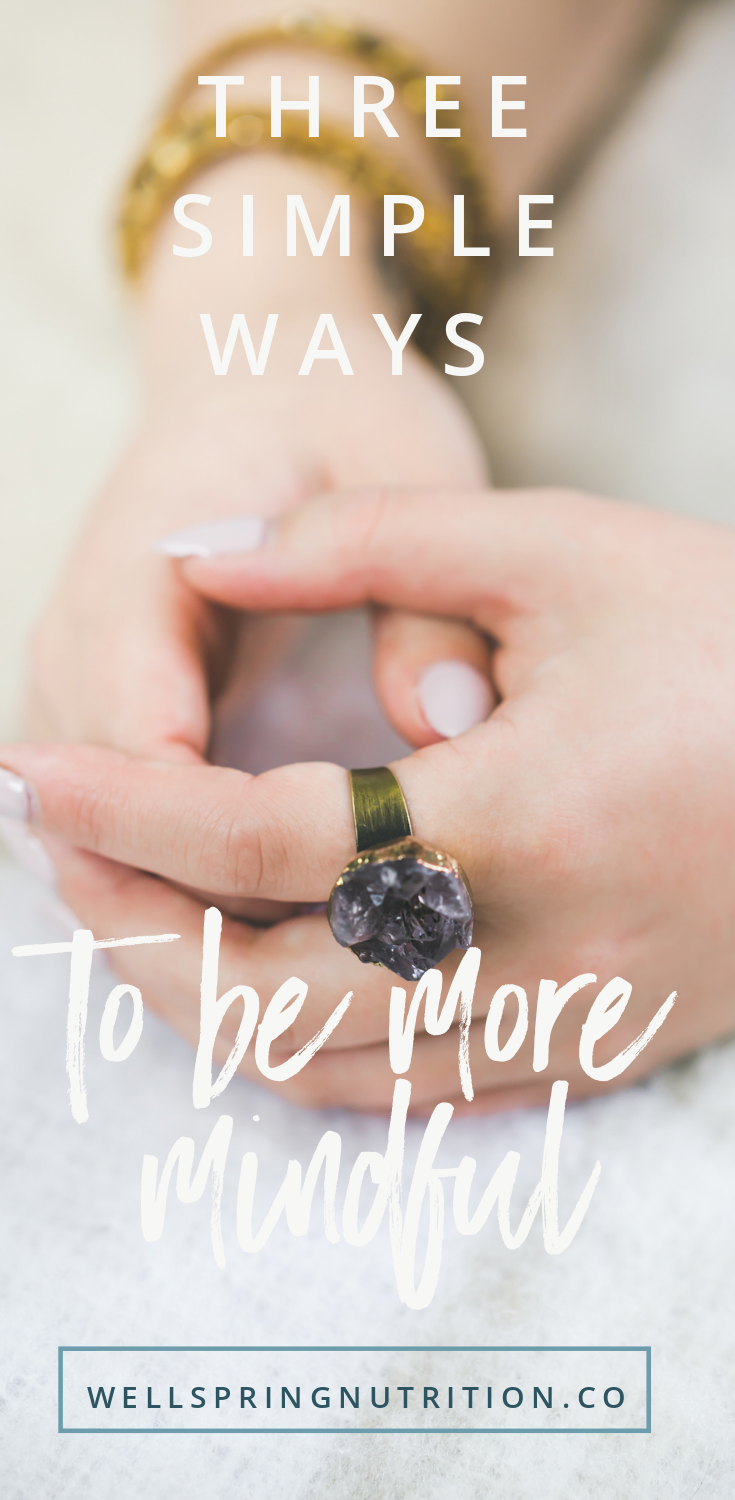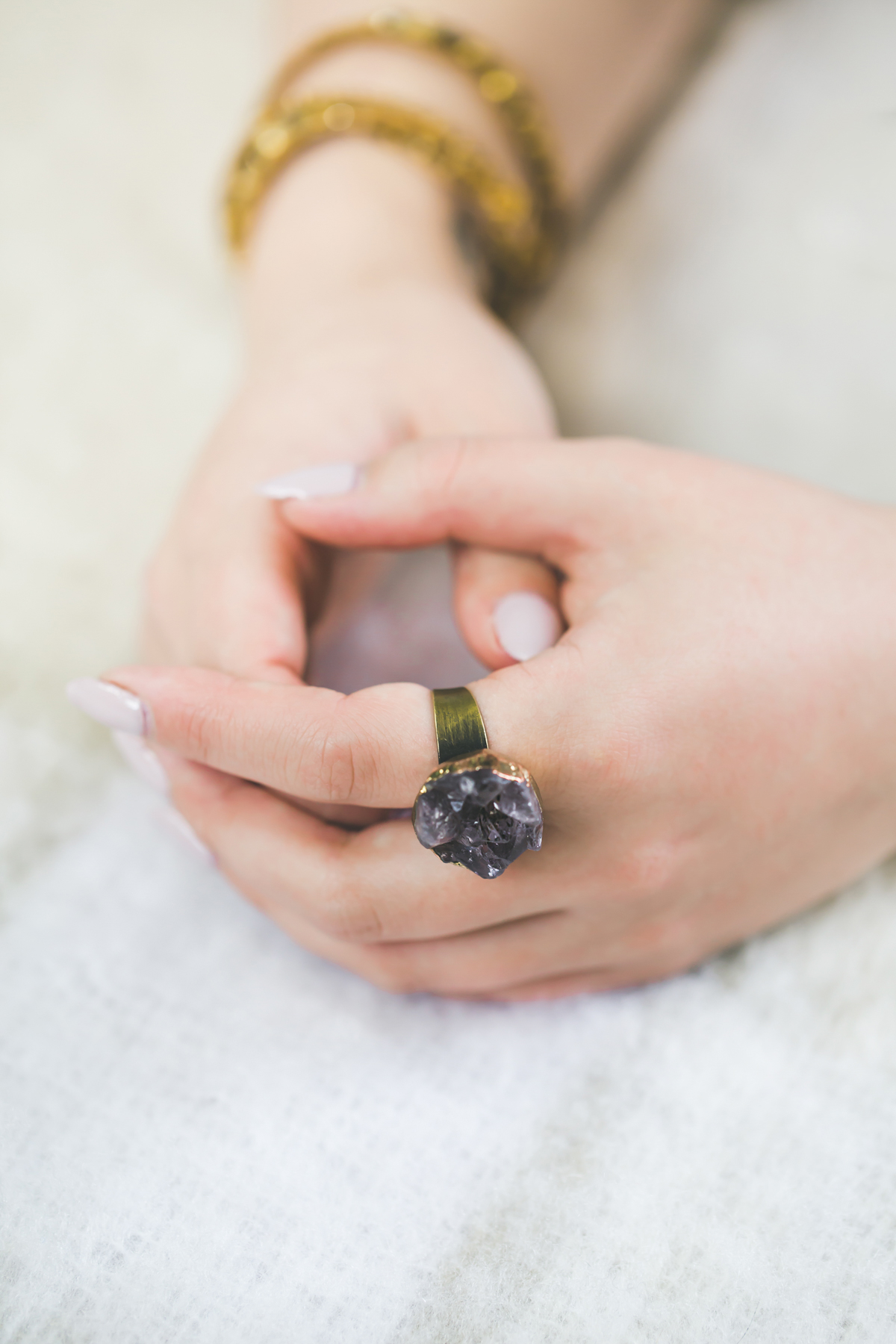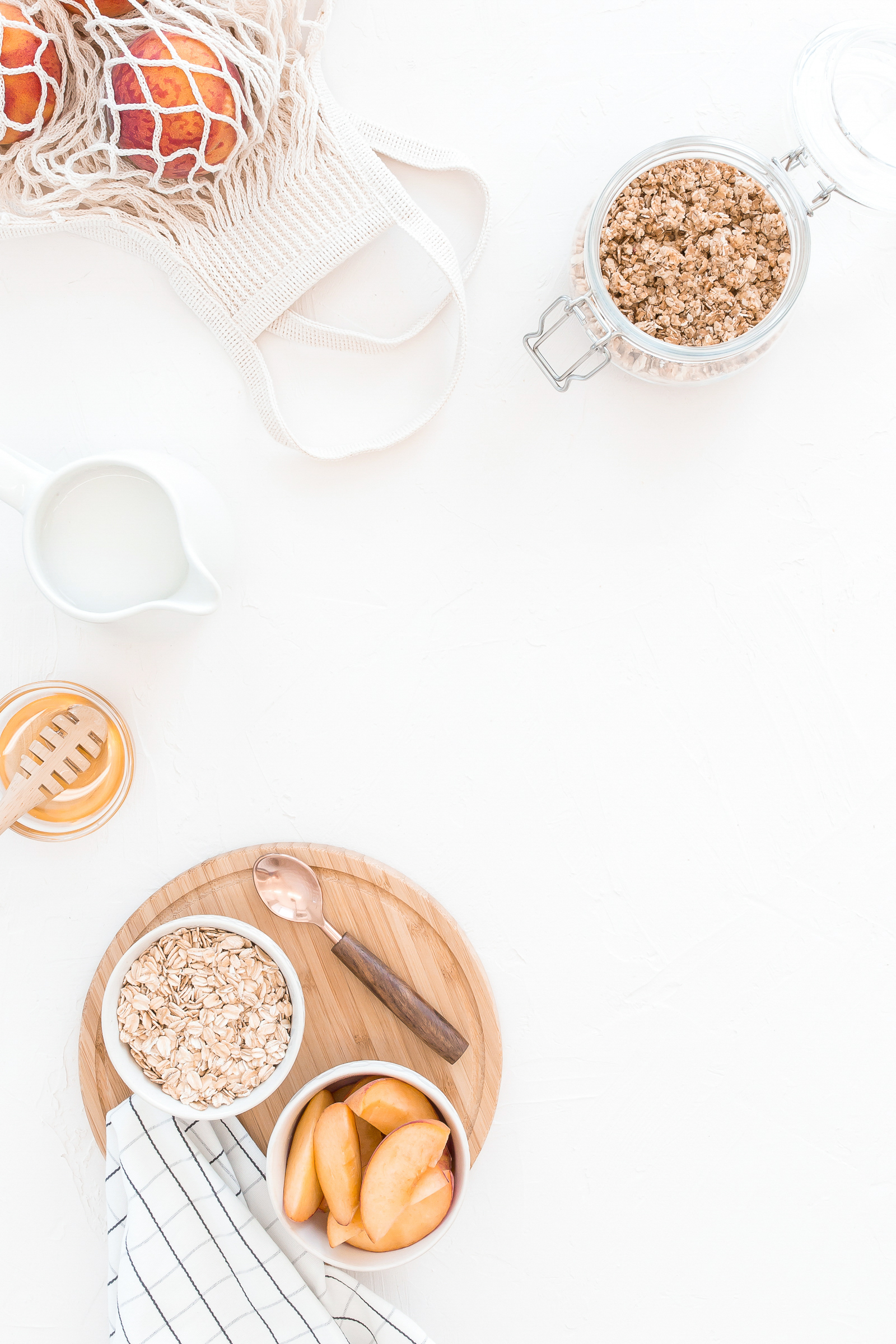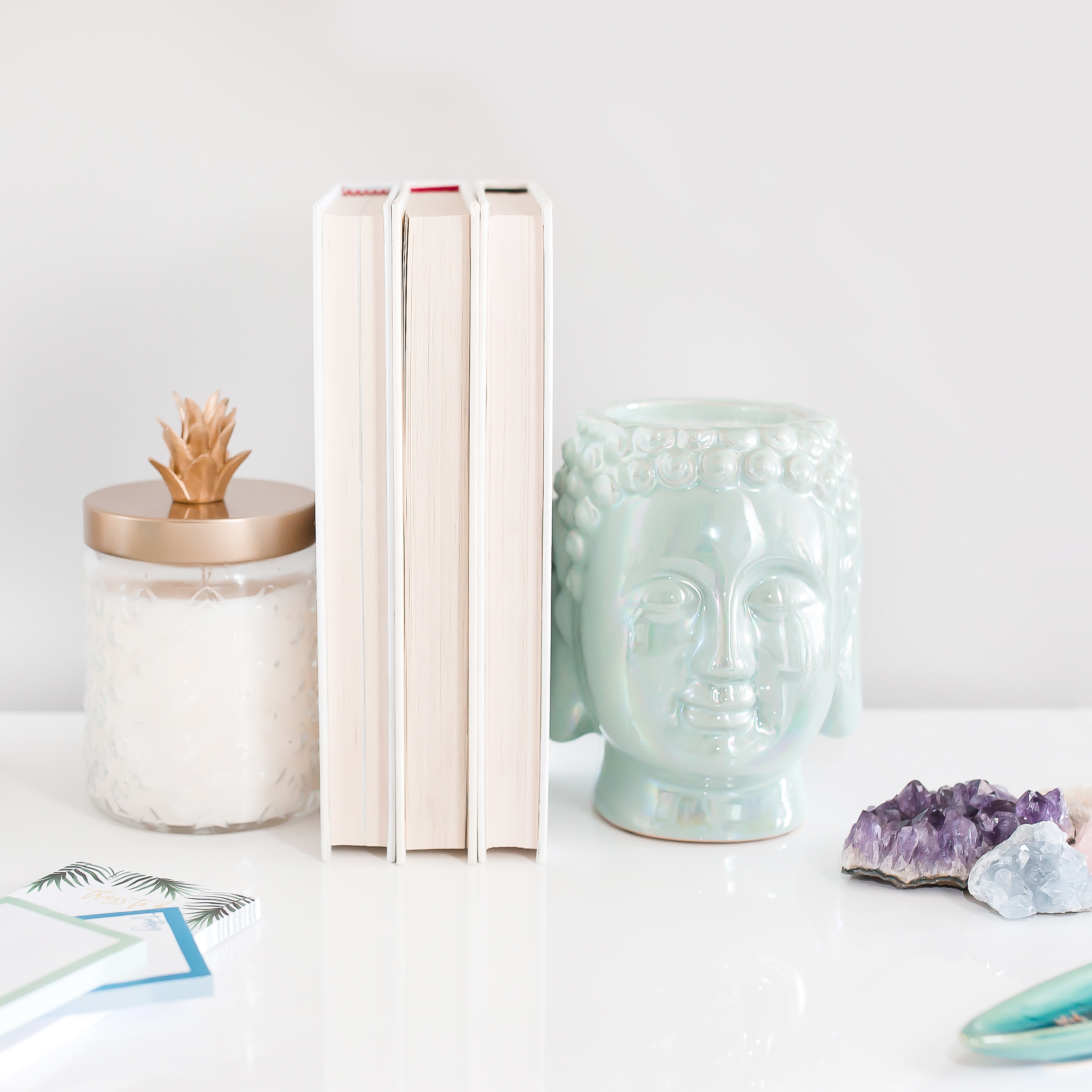Resources
Style
Planning
View All
THE blog
Written by: Lauren Chamberlain
Edited and Reviewed By: Anabelle Clebaner MS, RDN
Fertility is often thought of as a fixed trait, something predetermined by genetics. However, research in the field of epigenetics is revealing a different reality—one where lifestyle choices, environment, and nutrition can directly influence fertility and even impact the health of future generations. Epigenetics refers to modifications in gene expression that don’t alter DNA itself but affect how genes function. These changes can be passed down, meaning the way we live today has lasting consequences beyond just our own reproductive health.
Recent studies have shown that dietary patterns, stress levels, and environmental exposures can trigger epigenetic modifications that affect reproductive health. These findings highlight how fertility isn’t just about genetics—it’s also about how we live our daily lives.
So, what does this mean for fertility? Simply put, the way we eat, manage stress, exercise, and even sleep can influence our ability to conceive and the long-term health of our children. Let’s explore how epigenetics shapes fertility and what lifestyle changes can make a positive impact.
What is Epigenetics?
Epigenetics is the study of how external factors can turn genes on or off without altering the DNA sequence itself. This occurs through mechanisms like:
- DNA Methylation – Chemical tags attach to DNA, affecting gene expression. This process helps regulate hormone production and embryo development. Too much or too little methylation can disrupt fertility-related genes, impacting egg and sperm quality
- Histone Modification – DNA wraps around proteins called histones; changes in this structure can enhance or suppress gene activity, influencing reproductive potential. Studies suggest that histone modifications play a key role in gametogenesis and early embryo development.
- Non-Coding RNA – These molecules help regulate gene function, ensuring that reproductive processes occur smoothly. Specific microRNAs (miRNAs) have been linked to follicular development and sperm maturation.
In fertility, epigenetics plays a crucial role in egg and sperm quality, embryo development, and hormone regulation. Small lifestyle adjustments can either support or hinder these processes, influencing both conception and pregnancy outcomes.
The Link Between Epigenetics and Fertility
Epigenetic changes affect both male and female fertility in various ways, including:
- Egg and Sperm Quality: Poor nutrition, stress, and toxins can trigger harmful epigenetic modifications, reducing reproductive potential. Oxidative stress can impair mitochondrial function in oocytes, impacting fertilization and embryo viability.
- Hormone Balance: The way genes regulate estrogen, progesterone, and testosterone is influenced by lifestyle, affecting ovulation and sperm production.
- Reproductive Disorders: Conditions like PCOS, endometriosis, and unexplained infertility are linked to epigenetic shifts. Recent studies suggest that altered DNA methylation patterns in endometrial tissue contribute to implantation failure.
By understanding these connections, we can take proactive steps to support fertility through daily habits.
Lifestyle Factors That Influence Epigenetics and Fertility
1. Nutrition: Fueling Fertility at the Genetic Level
A diet rich in essential nutrients directly influences epigenetic programming. Key nutrients include:
- Folate & B Vitamins – Support proper DNA methylation, essential for healthy egg and sperm development.
- Vitamin D – Enhances ovulation and facilitates egg transport and fertilization in the oviduct.
- Choline – Plays a role in fetal brain development and gene expression.
- Antioxidants (Vitamin C, E, Selenium, Zinc) – Reduce oxidative stress, protecting reproductive cells.
- Healthy Fats (Omega-3s) – Essential for hormone production and epigenetic signaling.
- Coenzyme Q10 (CoQ10) – Supports mitochondrial function and enhances egg and sperm quality, playing a role in energy production within reproductive cells
In contrast, processed foods, refined sugars, and trans fats can disrupt hormonal balance and negatively influence gene expression.
2. Stress and Cortisol: The Hidden Fertility Disruptor
Chronic stress triggers the HPA-axis (hypothalamic-pituitary-adrenal axis), a system responsible for regulating stress hormones. When overstimulated, the HPA-axis increases cortisol levels, negatively impacting ovulation, implantation, and sperm production. Epigenetic research suggests that prolonged stress can alter hormone receptor genes, making the body less responsive to reproductive hormones.
Ways to manage stress:
- Mindfulness & Meditation – Helps lower cortisol and supports reproductive hormone balance.
- Regular Movement – Gentle exercise like walking, yoga, or strength training improves resilience.
- Adaptogens – Herbs like ashwagandha and rhodiola may support adrenal health.
- Adequate Sleep – Poor sleep raises cortisol and disrupts hormone production.
3. Environmental Exposures: The Silent Epigenetic Disruptors
Everyday exposure to toxins and endocrine-disrupting chemicals (EDCs) can negatively impact fertility by altering gene expression. Common culprits include:
- Plastics (BPA, phthalates) – Found in food containers, disrupt hormonal balance.
- Pesticides & Heavy Metals – Linked to poor sperm quality and egg development.
- Personal Care Products (Fragrances, Parabens) – Interfere with estrogen and progesterone function.
Ways to reduce exposure:
- Choose organic produce when possible.
- Use glass or stainless-steel containers instead of plastic.
- Switch to non-toxic beauty and cleaning products.
- Minimize use of single-use coffee pods, as they may contain BPA and phthalates that disrupt hormone function!
4. Exercise: Finding the Right Balance
Physical activity supports healthy gene expression and improves fertility by:
- Regulating insulin and blood sugar (critical for PCOS and hormone balance).
- Enhancing circulation to reproductive organs.
- Lowering inflammation, which can affect egg and sperm quality.
However, excessive exercise can have the opposite effect, triggering stress responses that suppress ovulation and lower sperm count. Finding a balance with moderate movement is key.
5. Sleep and Circadian Rhythm: The Overlooked Fertility Factor
Melatonin, the sleep hormone, also plays a significant role in fertility by regulating the menstrual cycle and protecting eggs and sperm from oxidative stress. Poor sleep patterns can lead to:
- Disrupted reproductive hormones (irregular ovulation and sperm production).
- Increased inflammation and stress levels.
- Higher risk of pregnancy complications.
Improving sleep hygiene can enhance fertility by supporting natural hormone rhythms.
Transgenerational Effects: How Your Choices Affect Future Generations
Perhaps the most fascinating aspect of epigenetics is that lifestyle habits not only impact your fertility but also your children and grandchildren. Studies suggest:
- Parental diet before conception can shape a child’s metabolism and disease risk.
- Stress during pregnancy can alter fetal gene expression, affecting health later in life.
- Environmental exposures in one generation may increase infertility risks in future ones.
This means that the steps taken today to optimize fertility aren’t just for us—they’re for future generations, too.
Practical Steps to Optimize Epigenetics for Fertility
To support fertility and healthy gene expression, consider:
- Eating a nutrient-dense diet rich in whole foods and antioxidants.
- Managing stress with meditation, journaling, or therapy.
- Reducing exposure to environmental toxins.
- Finding a balanced exercise routine.
- Prioritizing sleep and circadian rhythm alignment.
Even small changes—like switching to glass food storage, adding more omega-3s to your diet, or prioritizing sleep—can positively impact your fertility and future generations. Which one will you start with today?
Try the Modified Mediterranean Diet
Studies have found that low homocysteine levels were found in those that followed this diet. Remember – elevated homocysteine levels are linked to poor egg quality and deficiencies in folate and B12. The traditional Mediterranean Diet is high in grains.
Try this version instead:
- Less grains, more starchy veggies and berries, low glycemic load carbs
- Healthy fats like olive oil, avocados, nuts, seeds, and animal fats from pasture raised, grass fed animals
- Full- fat dairy (preferably raw or fermented dairy)
Unlike the traditional Mediterranean diet, this version limits grains to stabilize blood sugar and support hormone balance. The inclusion of pasture-raised animal fats and full-fat dairy ensures an optimal intake of fat-soluble vitamins (A, D, E, K), choline, and glycine, all critical for reproductive health. This diet is also rich in B vitamins, omega 3 fatty acids, choline, iron, and zinc! All powerhouse nutrients that promote reproductive health.
Conclusion
Epigenetics is transforming our understanding of fertility, showing us that our daily choices influence not only our ability to conceive but also the long-term health of our offspring. By adopting healthy nutrition, stress management, toxin reduction, and sleep habits, we can optimize fertility in a way that extends far beyond our own generation.
Making these changes today isn’t just about getting pregnant—it’s about creating a healthier future for generations to come.
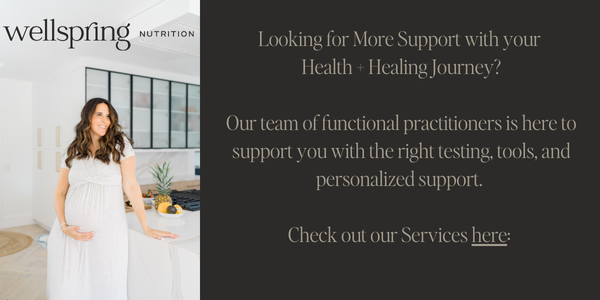
Sources
https://pmc.ncbi.nlm.nih.gov/articles/PMC6463256

This past week I asked my Insta-fam what you all were interested to learn more about, and most of you said morning routines! I’m really happy about that, because creating a mindful morning routine has been one of the best healthy hacks I started in 2018. And it’s no surprise that some of the world’s most successful people attribute having a solid morning routine to their success.
Why Morning Routines Are a Powerful Habit to Keep
Having a morning routine is a habit, and the more you do it, the easier or more intuitive it becomes. If you haven’t read my post on how to create and stick to habits, go check it out first and be sure to grab my free habits tracker while you’re there!
Now, morning routines are not just about waking up, brushing your teeth, drinking coffee, and heading out the door. Because let’s face it, most of us do that any way. This is about going deeper, and being intentional with your morning to set yourself up for success for the rest of the day.
Do you ever have a morning where you’ve snoozed one too many times, jump out of bed in a panic, hastily throw on whatever clothes you see first, and then grab a coffee on your way into work? How do you feel after a morning like that? Most likely frazzled, stressed, and not in a place to be creative and think outside the box.
The idea behind having a mindful morning is that you are calm, focused, and ready for your day by the time you arrive to work. Having time in the morning just for you, allows for time to de-stress and prioritize what is most important.
I’ll share with you my current morning routine, which is pretty tight to be honest because I’m doing my clinical internship at the moment, and I have to be at work by 7am. I’ll also show you my morning routine when I was working from home and would start around 8:45-9am.
Current Morning Routine:
5:30am Wake up using my sunrise alarm clock, turn on the electric kettle to heat some hot water for my lemon water and coffee. Brush teeth, splash face with ice cold water.
5:35 am Make my warm lemon water and protein coffee, bring both drinks back to my room and set my Insight timer for 10 minutes of meditation (I keep my phone on airplane mode in the morning to help minimize distractions from social media)
5:45 am Either write down or say out loud three things I’m grateful for. This helps to set my day off with a positive note.
5:50 am 10 minutes of light yoga and stretching to wake my body up more. I like Yoga with Adrienne’s videos on Youtube
6:00 am Get dressed (clothes are laid out from the night before), put some makeup on, and grab my lunch from the fridge (meals prepped from the night before)
6:15 am Head out the door and start my 45 minute commute to work
Now, this current morning routine is less than ideal for me TBH. But, I am still making sure to get in some meditation, movement, and gratitude journaling in first thing in the morning. I am pretty low-maintenance when it comes to work outfits, makeup, and hair so it really does only take me 15 minutes to get dressed and out the door.
If you need more time for this, make sure to be aware of how much time you truly need to get ready. I also wanted to share my morning routine from a couple months ago, because it was my *absolute* ideal.
Past Mindful Morning Routine:
6:00am Wake up, turn on the electric kettle to heat some hot water for my lemon water and protein coffee. Brush teeth, splash face with ice cold water.
6:05 am Make my warm lemon water and walk over to the living room and set my Insight timer for 10 minutes of meditation, lighting a candle or palo santo.
6:15 am Make my protein coffee, get dressed for the gym, and make my bed.
6:30-7:30am Workout at the gym down the street from my house – mix of strength training and cardio.
7:45am Back home, shower, get dressed for the day, and make breakfast (usually a green smoothie)
8:15am Write out my priorities list for the day as well as fill in my gratitude journal.
8:30am Start working from home!
I think both of these morning routines show you that whether you have 30 minutes or 2 hours in the morning, there is precious time to be taken advantage of. Instead of arriving to work flustered and unfocused, you can arrive having already accomplished some major things.
A good morning routine begins the night before. I will do another separate post about nighttime routines, because this will help set you up for success in the morning!
One of the most important things you can do to have a good morning routine without distractions is to keep your phone on airplane mode in the morning. I don’t turn on my phone on until I get in my car for Google Maps. This eliminates the distraction of checking Instagram or emails right in the morning, which immediately pulls your attention and focus away from the present moment.
Tips for Creating a Mindful Morning Routine:
-Set your alarm for even 10 minutes earlier in the morning. If you can’t seem to find time in the morning, start small. Remember, 5 minutes of meditation is better than none.
-Resist the urge to snooze! I’ll be the first to admit that I struggle with the snooze. But I started saying to myself: “you snooze, you lose” and for some reason it gets me out of bed! Try it and let me know if it works for you too!
-Start with one thing at a time. You know the fastest way to fail at this? Try and do everything at once! Seriously, pick ONE thing and stick with it for at least one week before adding on something else. I always recommend starting with meditation. If you need some inspiration, check out this post on my favorite meditation apps.
-Change with the seasons and don’t be afraid to allow your routine to change! Right now, I’m in a season of intense work. I’m doing my clinical internship to become a Registered Dietitian and the hours are insane. That’s okay. I’ve adjusted my routine to still include just a few of my favorite things and when I’m back to a more relaxed work schedule, I’ll likely shift back into morning workouts and having a slower morning.
-Just do it. Seriously. However many excuses you have, just try out one simple thing like writing down 3 things you’re grateful for, or 5 minutes of mindful breathing. Whatever it is, try it out and stick with it for at least 2 weeks before deciding it’s not for you. And of course, report back and let me know how it goes!
So what do you think? Do you have a morning routine you love, or are you going to try one of the things listed here? Let me know in the comments below so I can hear about your beautiful mindful morning routines!
xo,
This past week I took five days away from work, away from my family and friends, away from social media to sit in silence and do… nothing. Seriously.
If you’ve ever heard about those weirdos who sit in silence for days at a time meditating somewhere in the forest, well – I became one of those weirdos.
I attended a Jewish Meditation retreat with Or Ha Lev, co-sponsored by Pardes and NYU Center for Spirituality. It was five days of silence, meditation, chanting, and contemplating life. I drove out to Waynesboro, Pennsylvania (which in case you haven’t heard of Waynesboro, PA -there’s next to nothing there), with my yoga mat in tow and embarked on one of the most transformative experiences in my entire life.
Now, I know that last sentence seems like a lot, a bit Eat, Pray, Love of me – but truly, it was. That’s not to say it didn’t come with road bumps, because there were. Plenty of them. Which is why I wanted to take some time to write out the various expectations I had vs. the reality of what happened.
Day One: Utter and Complete Boredom
 The first day honestly felt like the longest day of my entire life. May I remind you that I’ve lived in remote villages in Nepal, and I’ve also spent several weeks living in an ashram in the south of India. But no, the first day of silence felt so painstakingly long and BORING, I immediately thought about escaping into the woods.
The first day honestly felt like the longest day of my entire life. May I remind you that I’ve lived in remote villages in Nepal, and I’ve also spent several weeks living in an ashram in the south of India. But no, the first day of silence felt so painstakingly long and BORING, I immediately thought about escaping into the woods.
Every sitting meditation was excruciatingly long and painful, my back ached, I felt really alone and bored, and pretty much just started judging everyone around me.
I thought that if every day was going to be like this, I might as well pack it home, because there would be no way I could survive this particularly cruel type of torture.
My expectations going into this retreat were:
- I would be totally blissed out the entire time floating on a cloud
- I would transcend time and space and just meditate without any distractions
- I would feel soooo good about the fact that I was there
- I would be nourishing my body with the most delicious organic vegan foods
The reality on day one:
- I was super uncomfortable despite having several blankets and cushions and couldn’t sit still
- I was bored and tired, and actually dozed off several times during meditation
- The food was less than stellar, and I had to mindfully endure each bite
- I was so over the teachers, and them telling me to just breathe (I am breathing! I’m alive aren’t I?!)
Days Two and Three: Things Start to Shift
Something happened on day two: I began to settle in to my surroundings. When the morning bells rung at 5:45am I felt energized, and ready to dive into my first 45 minute sitting meditation at 6:15am.
I started to really focus on my breath, and even begin to feel in my body where thoughts and feelings were coming up. I began to see everyone around me as individuals who were all going through something of their own. When they cried, I cried. When they laughed, I laughed. We were all connected.
I still dozed off during one of my meditations, and I did question why I was there sometimes when I could have been hanging out with my family, and enjoying myself rather than being in my own thoughts and reflecting on every life decision. But hey, I was getting deeper into my meditations and actually started to look forward to them rather than dreading them.
Days Four and Five: Complete Transformation
There were several things that led to a transformation in me and I want to list them out here:
1. We had small group meetings where we were allowed to talk, and share with the teacher what we were struggling with. Being able to hear others around me express their own fears, frustrations, emotions, family drama, relationship hardships, etc. really put me at ease and made me feel like I was not alone in my struggles and thoughts. It was an excellent lesson that we ALL deal with things in our lives, and NO ONE has it all together. And if they tell you they do, they’re lying.
2. They call it a meditation practice for a reason. Just like a sport, or musical instrument – the more you practice, the “better” you get. Now, I’m not going to measure one meditation “better” than another, but I will say that it became easier for me to sit still and focus on my breath and awareness of the present moment. Before coming to this retreat, I was meditating every day – but I was meditating for five minutes. For me, that was what I felt I could reasonably do on a daily basis. On retreat, we would sit for 45 minutes to an hour, several times throughout the day. The more I sat down to meditate, the easier it became to go for longer periods. And with longer meditations, came more insight.
3. Being away from my phone, and being in nature completely healed me. It’s funny, but we don’t tend to notice how much technology impacts our lives. But when you work on a computer all day long, check your phone constantly, and then go home and watch TV – it’s easy to forget what shutting down actually feels like. Not only did I not have cell service, but my entertainment became the trees, sky, and little insects on tree barks. One afternoon I just watched the rain fall for 20 minutes – twenty! I began to notice droplets of water on leaves, small ripples in a lake, mushrooms growing on the side of a log, and the sounds of rushing water. One day, I was walking so slowly (this was part of our meditation practice) that I noticed a tiny ant. And I stopped. I watched it crawl around for a bit and then continued on. The point I’m trying to make is that I was able to truly slow down. And that was incredible.
4. I had the time and space to examine my life deeply. This may be the most scary. For many of us, we continue on our daily habits and routines and don’t question much. I unearthed many things during this retreat, things that I had swept underneath the rug and didn’t want to deal with. On retreat, I was forced to confront these things, and also accept them, and myself, as they are with loving-kindness and self-compassion.
Lessons Learned and Top Meditation Tips
There were so many things I learned on this retreat, but the number one thing I want to share is that everyone needs to start meditating. Whether you do it for five minutes per day, or 45 minutes per day – cultivating a practice of awareness will truly shift your life for the positive.
So if you’re looking to start meditating, I’ll recommend a few things to help you on your own meditation journey:
- Start with a small actionable step: like meditating for five minutes per day. If you need an app to help with this, here are my favorites.
- Join community – there are many mindfulness communities, just Google one in your area, and start practicing with others. This is something I’m definitely going to be incorporating more of in 2019 and beyond.
- If you forget one day, or life gets busy, that’s okay! Just get back on to the horse. As one of my meditation teachers taught: if you forget to brush your teeth one day, will you stop brushing your teeth altogether? No! You’ll just brush the next day.
- Go on retreat! If you’re able to take a few days off, I highly recommend attending a meditation retreat to deepen your practice.
If you have any questions about mindfulness meditation you can let me know in the comments or reach out via email (hello@wellspringnutrition.co) or on Instagram!
Have you ever meditated? Would you ever attend a meditation retreat?
Three Simple Ways to Be More Mindful
We’ve all heard it before, mindfulness is the magic key to happiness, success, great love, etc. But how? How do we cultivate a mindfulness practice that isn’t intimidating or time consuming?
I’ve been practicing mindfulness meditation in waves for the past five years, and there is something truly powerful in implementing small steps that can last throughout the years.
So let’s get started!
Mindfulness Rule #1: PRACTICE GRATITUDE
Starting the day by saying OUT LOUD what you are grateful is an incredible way to start your day because you are shifting your focus on the positive. Sure, there will always be deadlines, relationship stress, and life’s little worrisome moments, but by starting your day by pointing out the blessings in your life, you are mentally shifting to being positive.
PRO TIP: I use a gratitude journal, because I like to put pen to paper. But you can lay in bed and just name 1-3 things that you are grateful for.
Have a partner that you share a bed with? Share your daily gratitudes with each other and spread that positivity!
Mindfulness Rule #2: DEEP BREATHING
This one can be a little tough. If you find yourself in a stressful situation, try stepping back and taking three deep breaths. You can do this right at your desk. Close your eyes, step away from your screen and inhale deeply feeling your ribs expand. Hold your breath for half a second at the top, and gently release and exhale it all out. If you feel comfortable, let out a sigh at the end of your exhale and feel yourself physically de-stress.
Try a mini-meditation by taking three deep breaths every hour, or once in the morning, afternoon, and evening. Taking a step back to breathe can be incredibly powerful.
Mindfulness Rule #3: TAKE A MOMENT BEFORE EACH MEAL
Before you take a bite of your food, take a moment to say thanks. This could be a blessing, or it could be a mental note. I like to take a second to think about where my food came from. Did my herbs come from my garden? Thank you seeds for sprouting into this food. Did my eggs come from my CSA? Thank you farmers and thank you chickens for laying those delicious eggs.
Buy your food at the supermarket? No problem! Thank you supermarket workers! Thank you food chain for giving me this food.
When we practice gratitude, deep breathing, and taking a moment before eating we cultivate a life of mindfulness. Small acts lead to big shifts. By adding in these small daily practices, you will begin to see the world differently. You will be more at peace with yourself and the world around you.
Have you tried any of these mindfulness practices? What is your biggest challenge to living a mindful life? Let me know in the comments below!
The Preconception Playbook
This free playbook provides specific actionable tips to get started on your fertility journey, as well as what to avoid while you're trying to conceive.
Get the free playbook

